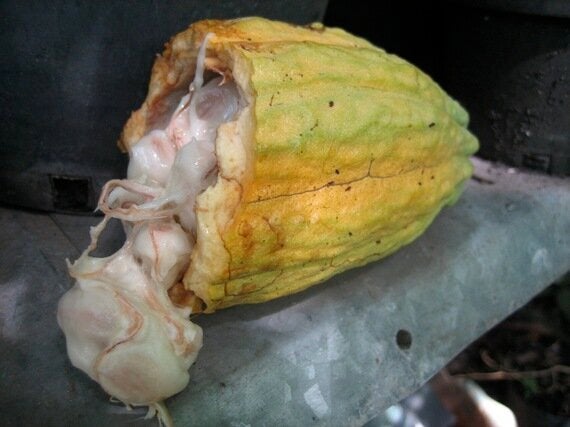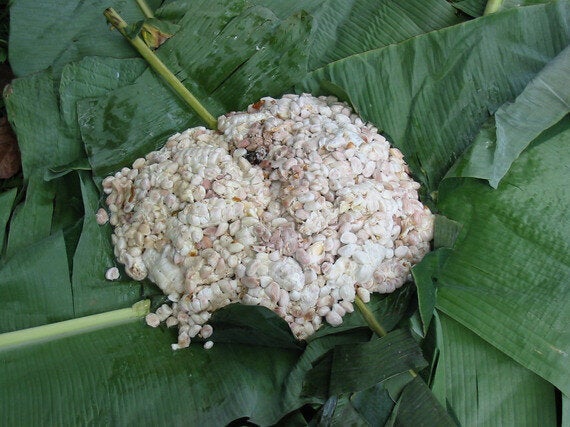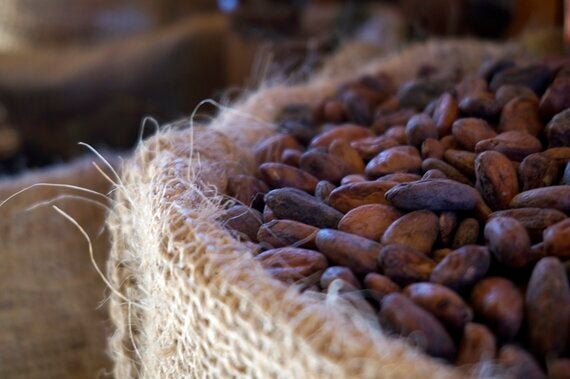
Cacao is not a crop which makes a farmer much money in many areas of the world. Recently the man awarded World's Best Pastry Chef 2016 got involved in adjusting the fermentation methods of cacao which is a critical process in giving chocolate its unique flavour - and it isn't the first time he's gotten stuck in. But is it right to interfere by adding in foreign fruit during the fermentation process to add flavour to the bean?
Chocolate is not like pastry. Making chocolate is, in fact, more difficult than coffee. In order to make a bar of chocolate, several cocoa pods have to be harvested and cut open. The seeds inside are covered in a white mucilage which is left on as they are piled into a box or onto banana leaves to ferment for a few days. The fermentation process is critical to the flavour of the chocolate it makes, best illustrated by the two bars offered by Friis Holm where beans are just either turned twice or thrice during fermentation. These two bars taste completely different from something as simple as just turning them during fermentation - so what will adding passion fruit do?

Pierre Herme has gotten his hands dirty getting involved in the process of chocolate making purely to increase the flavours delivered through his pastries. Famous all around the world, Pierre Herme was called by Vogue "the Picasso of Pastry" though I'm not entirely sure that was a compliment. He has, however, genuinely revolutionised pastry-making with regard to taste and modernity. He helped write the book - the bible - of making chocolate delights. He has serious credibility with everything to do with after the chocolate is made, including creating ab absolutely stunning breakfast served at one of the best hotels in Paris - Royal Monceau-Raffles. It takes a lot more than baking with chocolate to start changing essentials like fermentation.
After fermentation there is a lot more that goes in to making chocolate taste awesome including the roasting of the bean (too much and it tastes burnt, too little and it can remain sour or taste flat), cracking and winnowing, refining, conching and then tempering. This process is something artisan makers like Askinosie have perfected for each origin they work with and as master chocolate makers, the Askinosie team spend significant periods of time in origin. In this area, Pierre Herme turns the process over to expert chocolate makers Valrhona. So given the distance from the actual processing of the cacao, is it right for someone like Pierre Herme to get involved in adjusting fermentation processes?

I'd argue that of all the pastry chefs in all the world, Pierre Herme is probably one of about six who would actually have enough of a clue to sympathetically adjust fermentation to create a better chocolate. It isn't just understanding complimentary flavours or the over four decades of working with chocolate that he already has, it is understanding the local environment and spending time in origin - which he does. Pierre Herme spends time in origin like Shawn Askinosie, Willie of Willie's Delectable Cacao, and of course Sam and Vincent of Marou who live in Vietnam.
The chocolate that Pierre Herme has created (but is not available) is the result of several failed experiments, and while it will not change chocolate as we know it, it also will. What he has done is simply to add passion fruit to the beans during fermentation to add a fruit flavour to an already fruity bean. While it may seem simple, it isn't as not every fruit is local to cocoa growing areas, not every fruit will complement the natural flavour of the bean and not every fruit will work to infuse a flavour during fermentation. This will, I feel, lay the foundation for more creative experimentation with fermentation.
By failing as well as succeeding, Pierre Herme has added to the knowledge we have about chocolate making, as well as enriching the diversity of types of chocolate available. It's still an experiment but hopefully by working directly with farmers, more chocolate makers will use the established body of experimentation and build on it. Perhaps Marou will be next to experiment with fermentation with fruit?